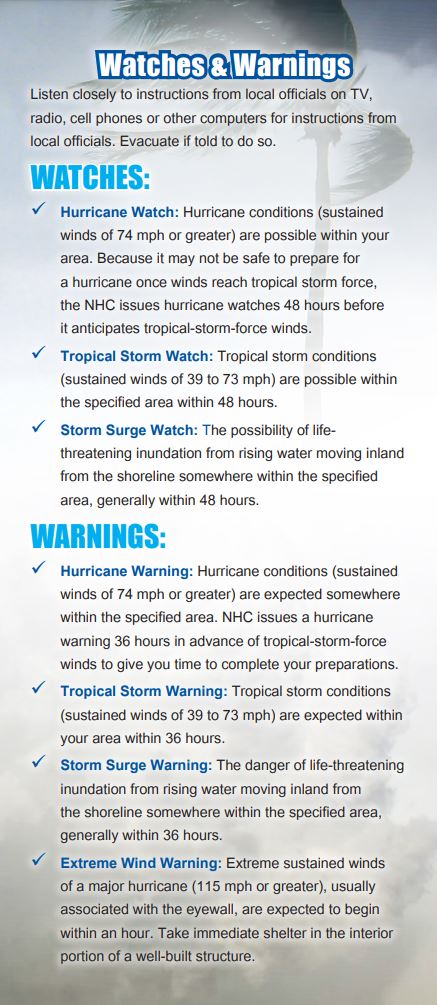While The University is not near the coast, potential effects from hurricanes or tropical storms can still occur – including inland flooding, strong wind, and possible tornadoes. A tropical storm is a tropical cyclone in which the maximum surface wind speed ranges from 39 to 73 miles per hour. A hurricane is a tropical cyclone in which the maximum sustained surface wind is 74 or greater miles per hour (NHC). Additionally, tropical cyclones can produce storm surge along the coast, spawn tornados with little or no warning, and may produce a significant rain event which may cause flooding.
Employees, students, and visitors should follow guidance communicated by University officials.
To prepare for a hurricane, FEMA has provided Basic Preparedness Tips:
- Stay informed. Pay attention to all hurricane/tropical storm notifications and updates sent by University officials.
- Know where to go. If you are ordered to evacuate, know the local hurricane evacuation route(s) to take and have a plan for where you can stay. Contact your local emergency management agency for more information.
- Build a disaster supply kit, including a flashlight, batteries, cash, first aid supplies, and copies of your critical information if you need to evacuate
- If you are not in an area that is advised to evacuate and you decide to stay in your home, plan for adequate supplies in case you lose power and water for several days and you are not able to leave due to flooding or blocked roads.
- Make a family emergency communication plan.
- If you live off-campus and lose power, please contact Alabama Power at 800-888-2726.

